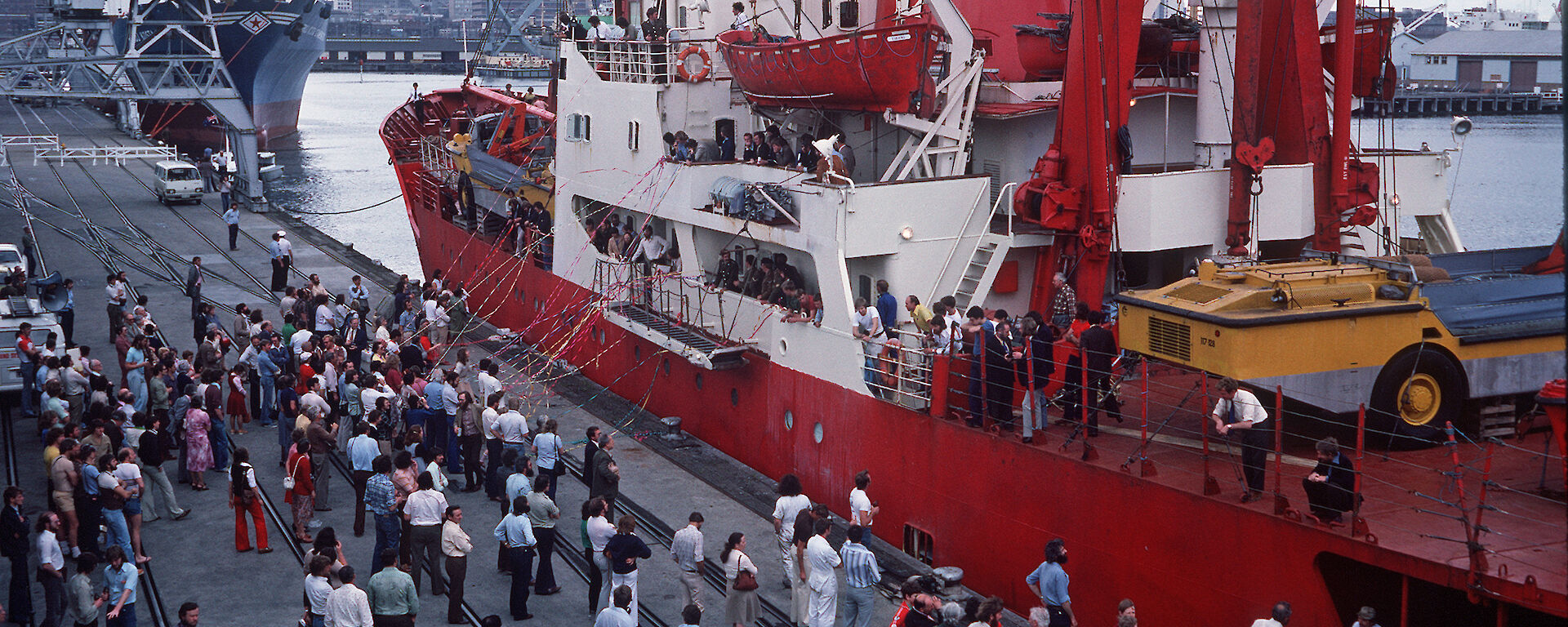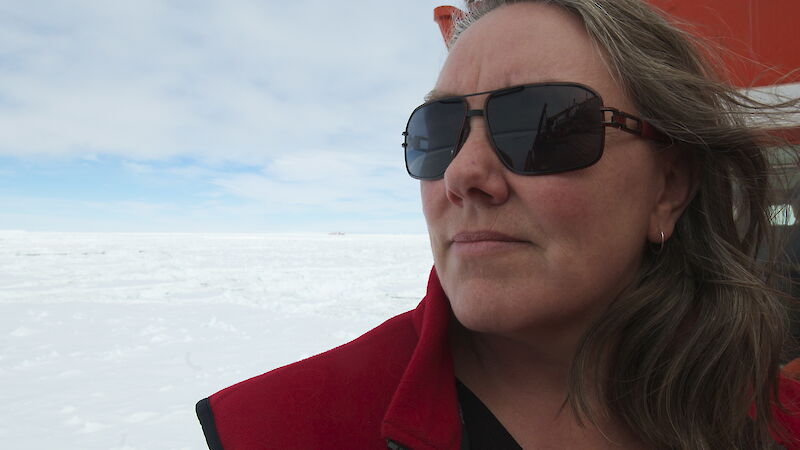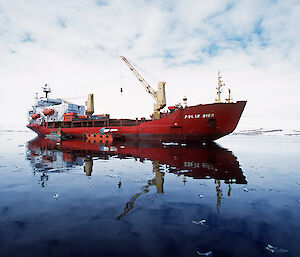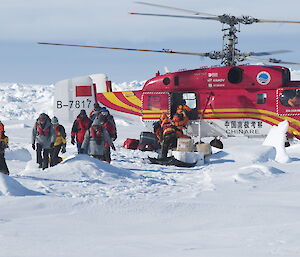After almost 35 years with the Australian Antarctic Division, Leanne is now the second-longest serving staff member and a good example of how a career can unfold, even in the absence of a plan.
“I had no idea about Antarctica when I started. I came in on a 17 week training scheme in the records section and then I kept applying for temporary jobs as they came up,” she says.
With no firm employment commitment, however, Leanne sat the Public Service merit selection exams and was offered a job with the Australian Taxation Office. Just before she left, a permanent position in the Division’s records section opened up, and the rest is history.
“I ended up here permanently and then I just fell into things from there. I never had a definite plan or career path.”
What Leanne did have was a willingness to try anything and work hard at it. This included working in various Head Office positions in finance, property and reception, as an Expeditioner Liaison Officer, an Operations Coordinator at Casey, and in various voyage management roles.
In 2009 she was asked to join the shipping group for six months. She hasn’t looked back since.
“It’s hard work and you’re thinking on your feet all the time. But it’s a very supportive environment, and I enjoy being part of a team where everyone has a contribution and every contribution is different,” she says.
Leanne is now a Shipping Officer, helping to manage access and activities on the ship when it is in port. She also takes care of the voyage management team, ensuring they have everything they need to do their job on the ship, and assisting with their training and briefings.
While Leanne is a seasoned hand now, she recalls her first experience on the job as a “baptism of fire”. On her first time on-call, a 10 foot refuelling container and hose reel got left behind in Hobart, as the ship headed south.
“The ship was on its way to Casey and was scheduled to stop at Macquarie Island on the way back to refuel the station,” Leanne says.
“Two days after the ship left I got a call from the Voyage Leader saying the refuelling equipment was missing. My boss was in Europe at the time, so I spent a lot of time on email working through the problem. Ultimately, we had to organise a separate voyage to Macquarie Island to refuel.
“You hear the term ‘flexible’ bandied about, but it does apply to this job. You might start on plan A but you’ll end up on plan D. You really have to adjust to the circumstances thrown at you.”
Leanne’s first experience as a Voyage Leader in December 2013 was similarly memorable… the year a tourist and scientific expedition became trapped in sea ice near Commonwealth Bay, onboard the Russian vessel MV Akademik Shokalskiy.
Leanne was onboard the Aurora Australis overseeing resupply operations at Casey research station when the call to assist the stricken vessel came through.
“We were in the middle of refuelling so we had to stop and work out who needed to be on or off the ship, how we’d get everything on to the ship that we needed, and what equipment we’d leave at the station. And we didn’t know whether we’d be able to come back to Casey,” she says.
The rescue operation was run by the Master of the Aurora Australis, with assistance from Leanne and fellow expeditioners with skills in glaciology, search and rescue, sea ice travel and watercraft operations, as well as the ship’s crew and a team at Head Office.
Once they reached the scene they worked with a Chinese helicopter team from the MV Xue Long to fly the 52 passengers from the Shokalskiy to an ice floe. From there the Australian team guided the passengers across the ice and used a fast rescue craft as a lift to transfer them to the Aurora Australis.
“There were about 40 people on the Aurora and they all had a job — greeting the passengers on the deck, guiding them down to the mess for something to eat, sitting with them and trying to provide a level of comfort,” Leanne says.
“From a people-management perspective it was exhausting. A lot of people just needed to talk and most afternoons the Deputy Voyage Leader and I would have people up to our office for a chat. We were proud of the fact that when they left our office they were laughing.”
Leanne has worked in voyage management on 13 voyages: three times as a Voyage Leader, twice as a trainee and the rest as a Deputy Voyage Leader. Despite her years of experience Leanne says her knowledge of Antarctic operations and logistics is still only “up to my ankles”. As Voyage Leader, Leanne is the decision-maker on voyage management issues, but she relies on a raft of experts.
“I don’t know everything and I’m happy for people to provide advice. We’re all working as a team to achieve an objective, whether that be resupply or responding to an emergency.
“As a Deputy Voyage Leader I work more closely with the crew. You tell them what you need done, but not how to do it.
“The key is managing relationships to ensure everyone has the information they need to do their jobs.”
Since her first voyage in 1985 on the Ice Bird, Leanne has seen many changes in Antarctic shipping operations.
“I remember when there were no fences and you could just turn up when a ship came in. There were streamers, bands playing and champagne corks popping,” she says.
“Security has tightened up since then. It’s a reflection of how the entire world has changed. We have more processes around safety and duty of care and they’re all documented in standard operating procedures. Safety is our number one priority.”
Leanne will miss the “small family business” she joined all those years ago when she retires in a few years’ time. But she plans to continue her regular catch-ups over coffee with the shipping and operations teams and she hasn’t ruled out a shot at voyage management when the new ship arrives in 2020–21.
Wendy Pyper
Corporate Communications





